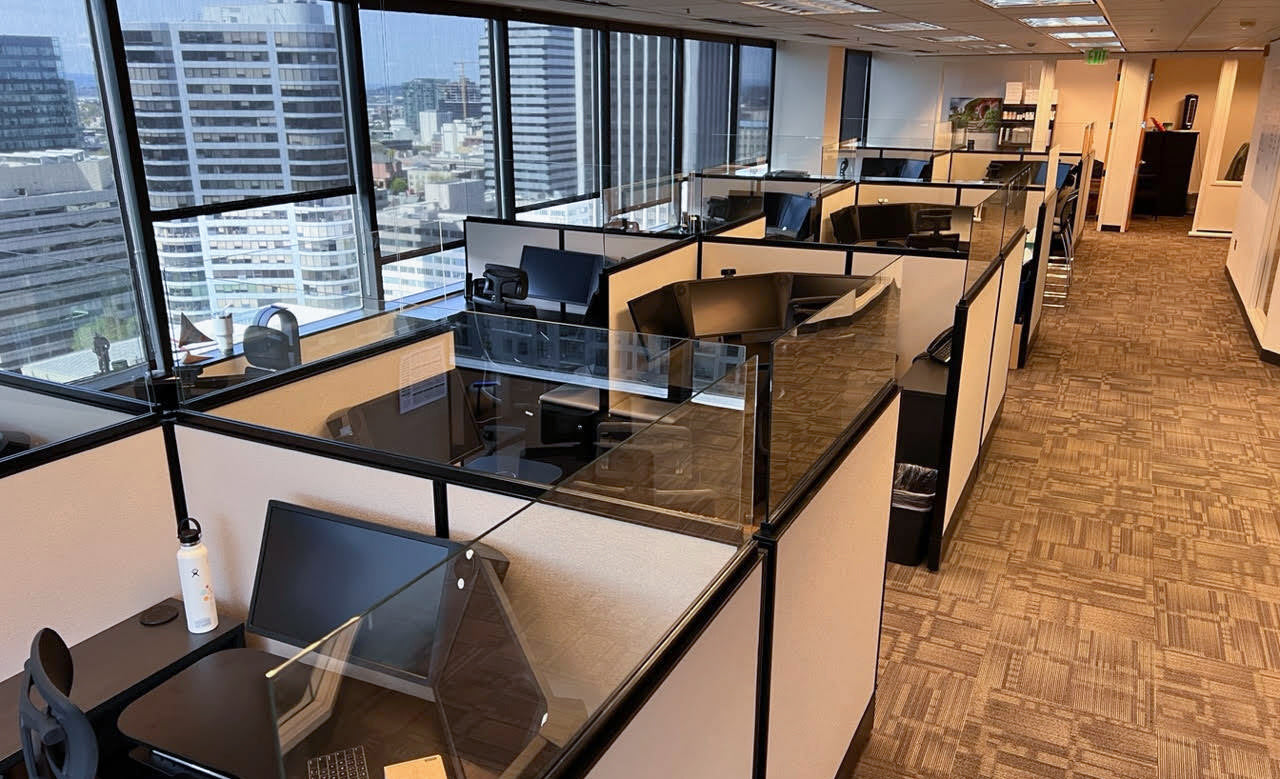It’s easy to think that office layouts for desk jobs don’t require much fuss. After all, such jobs don’t require people to move around as much. However, the truth is that the wrong layout can have devastating effects. Cramped and noisy workplaces can be uncomfortable and make employees prone to injury. Ultimately, they can have a significant impact on job satisfaction and productivity.
That’s why Entrepreneur highlights the importance of thoughtful workplace design: a design that considers the comfort of a company and strives to maintain both their health and productivity. This can play a significant role in workplace innovation and satisfaction.
Ultimately, this means that the best kind of layout for each company depends on the kind of business they do. For example, larger companies wouldn’t fare well in an office space designed for SMEs. In the same vein, graphic designers would feel uncomfortable and uninspired in an office meant for bankers.
But how exactly do you determine what office space will best suit your company? Below we discuss some common types of office spaces, their benefits, and which businesses are most likely to use them.

Shared and Coworking Spaces
Although shared and coworking spaces are unique, they have one thing in common: they both allow two or more businesses to share an office. However, they do so in different ways. On the one hand, a shared space is a conventional, commercially-leased office space. One business acts as the official tenant and invites other companies to share it. Coworking Mag explains that coworking spaces are usually owned by a single company whose sole purpose is to provide a workspace and amenities like drink stations, printers, and conference rooms. Everyone from independent companies to self-employed individuals like freelancers can rent office space and the services offered by a coworking space.
Saving money is a clear benefit that comes to mind when considering either of these options because they allow you to split costs like rent and utilities with everyone else using the space. Shared and coworking spaces also allow employees from different businesses to mingle with each other and even form communities. Additionally, these office layouts tend to suit newly established startups and businesses, small companies that don’t have enough resources to rent office space of their own, or businesses that have a hybrid work model in place.

Virtual Workspaces
Over the past couple of years, COVID-19 helped popularize remote work—and if you’ve tried it out, you may have considered implementing it permanently. However, you may have some lingering questions about doing so. What would be your business address? Where will your mail be delivered? When your team needs to meet in person, where will you meet? The virtual workspace helps by providing a physical location for completely remote businesses. It handles calls, provides reception services, and even offers meeting rooms and discounted desks when needed. With it, a business doesn’t need to pay rent or utilities. Remote work’s flexibility can also reduce the number of sick and vacation leaves filed, increasing overall productivity. You can even diversify your workforce with talent from all over the globe.
All this makes the virtual workspace the most affordable option here. Maryville University claims that social media marketing agencies are companies that can benefit from this space because they usually employ freelance and contract talent. Similarly, if you run a telehealth platform, specialize in high-tech tasks like programming, or work in any other business that mostly hires remote talent, this space may suit you as well. Finally, this option may also suit businesses that want to do a trial run when looking to operate remotely before committing to the work model completely.

Traditional Office Spaces
However, hybrid and remote work models don’t suit all businesses. This is especially true for customer-facing companies in industries like retail and healthcare. Fortunately, the traditional office design still offers many benefits. For one, it allows people to directly build strong relationships with their peers and supervisors. In the long run, this can help them become more familiar and satisfied with their workplace. The traditional office layout also gives you complete control over your working environment. Most office spaces are also rented for multi-year leases, so they’re great if your business has to reside in one location for a long time. Finally, staying in one place makes it easier for clients and customers to access and build trust in your services.
This setup is thus perfect for customer-facing businesses and larger companies that may find it difficult to handle employees remotely. However, your office needs to be designed for comfort and productivity if you want the benefits mentioned above. With full control of your space, consider getting started by outfitting your office’s workspaces with SmartDesk standing desks. We designed these standing desks to free users from distraction—and allow you and your staff to avoid any discomfort or health issues that come from sitting for too long.

Creative Office Spaces
If your business already rents out a traditional office space and is looking for a way to improve on what it has, you may want to try converting it into a creative or open-plan office space. This type of layout features modern furnishings, high ceilings, more windows—and fewer unmovable barriers like walls or dividers. The result is a more space-efficient workplace with nearly no private offices. Instead, a creative office promotes more public work and meeting spaces, with moveable walls and furniture that can create work areas as they’re needed. Many creative offices also boast additional amenities like recreational areas, kitchens, and even game rooms.
A creative space’s layout is deliberate. With fewer barriers and individual offices, the design promotes more transparency within a company—both horizontally and vertically along its organizational structure—to enhance collaboration both between colleagues and between employees and higher management. Its modern furnishings and celebration of natural light are meant to enhance creativity, productivity—and, above all, comfort. It may also promote energy efficiency and lower an office’s overall carbon footprint. Startups, larger tech companies, and creative businesses usually adopt creative office spaces. However, any business that wants to nurture a friendlier and more productive atmosphere in the workplace can use a creative space’s layout to its advantage.
It can be challenging to find an office space that best suits your company’s needs while helping you and your staff perform to the best of your abilities. Hopefully, this quick guide to the merits of each office space provides you with some great ideas on how to begin.

FAQ
What are some common mistakes businesses make when choosing an office space?
Some common mistakes businesses make when choosing an office space include not considering their company’s budget, culture, or space requirements. Additionally, some businesses fail to negotiate the terms of their lease or do not consider the location of the space.
What should I look for in a coworking space?
When considering a coworking space, there are several factors you should keep in mind, such as location, price, and amenities. You should also consider the type of atmosphere you want in your coworking space, as well as the size and layout of the space. Most importantly, you should make sure the coworking space you choose is a good fit for your company’s culture.
How much does a coworking space cost?
The price of coworking spaces can vary greatly, depending on size, location, and services provided. Furthermore, some coworking spaces require a membership fee, while others charge by the day or hour. On average, you can expect to pay anywhere from $200 to $500 per month per person.
How can I make sure my customers and clients will be able to find and trust my business if I choose a virtual office space?
First, make sure your business address is listed prominently on your website and in online directories. You may also want to consider using a physical mailing address or phone number for your business, even if you conduct most of your business virtually. This will give your customers and clients another way to reach you if they have any questions or concerns.
How can I make sure my traditional office is cost-effective?
You can save money by sharing resources with other businesses in your area. Additionally, look for ways to reduce your energy consumption and waste. Finally, try to negotiate a lower rent price with your landlord. If you’re able to commit to a longer lease, they may be more willing to work with you.
How can I convert my traditional office space into a creative one?
If you’re interested in converting your traditional office space into a creative one, you can start by making small changes. For example, you might want to add some artwork to the walls and introduce more natural light into the space. You can also consider more drastic changes, like reconfiguring the layout of the space or installing glass partitions. Ultimately, the goal is to create a more inspiring and collaborative work environment.
How do I know if my business is ready for a creative office space?
If you’re not sure if your business is ready for a creative office space, consider your company’s culture and values. If your company is open to change and new ideas, a creative office space may be a good fit. Additionally, if your business is in a creative industry, such as advertising or design, then a creative office space may help you attract and retain top talent. However, if your company values tradition and stability, a traditional office space may be preferable.



